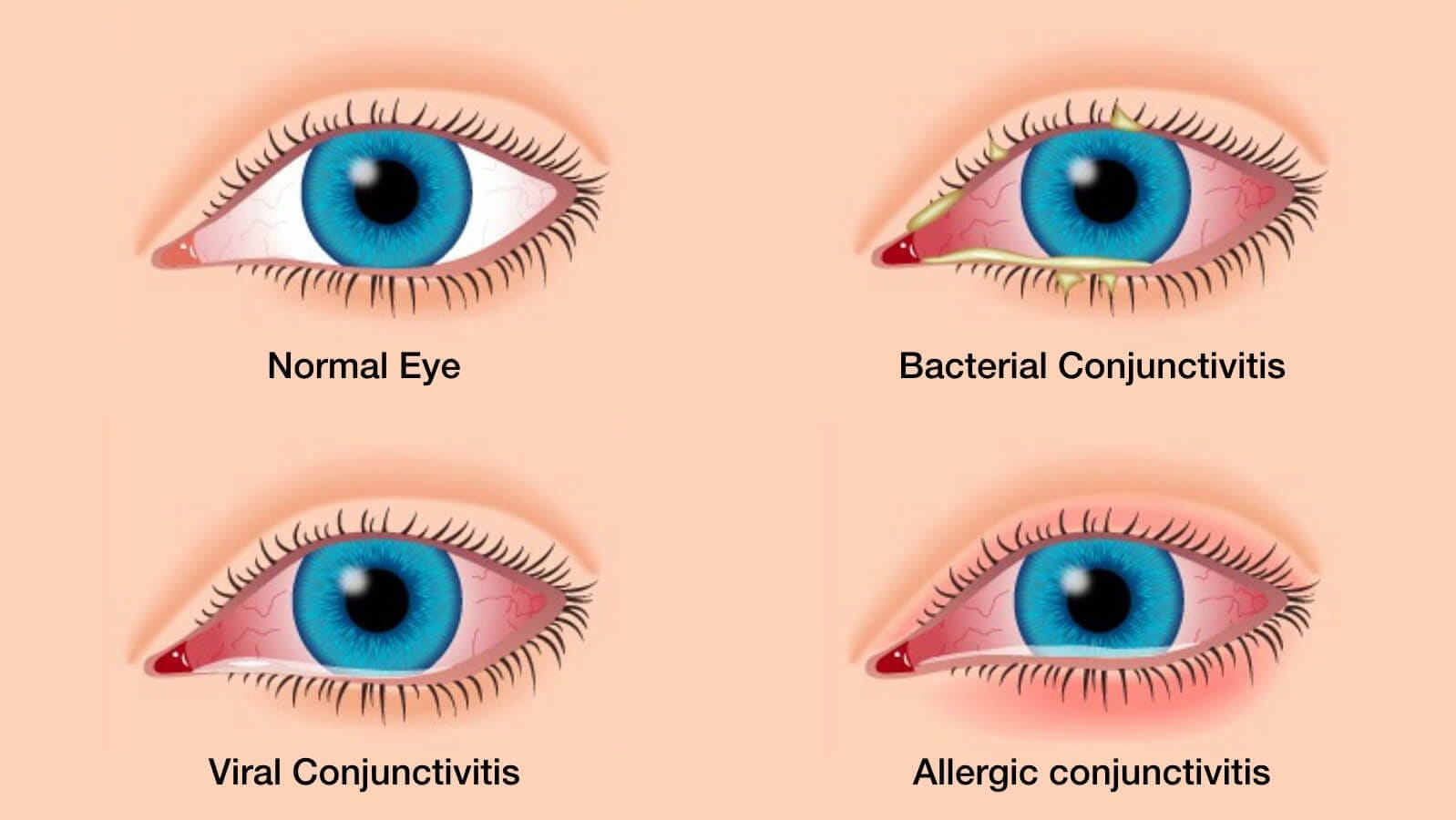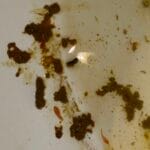Pink eye, or conjunctivitis, is a common eye infection that can spread like wildfire. You might have heard it’s highly contagious, but have you ever wondered exactly how long those pesky pink eye bacteria can survive on surfaces? The answer might surprise you!
Unveiling the Staying Power of Pink Eye Bacteria
Let’s break down the science behind pink eye’s persistence and, more importantly, equip you with the knowledge to stay safe.
Bacterial vs. Viral Pink Eye: A Tale of Two Germs
First things first, there are two main types of pink eye: bacterial and viral. Both can leave your eyes feeling itchy and irritated, but they differ in their longevity on surfaces.
Bacterial pink eye is caused by bacteria that typically linger on surfaces like doorknobs, phones, or toys for a few hours—usually around 2 to 8. However, certain stubborn strains can play the waiting game for up to two days. Think of it like this: once the bacteria land on a surface, their time is limited, but some are stealthier than others.
Viral pink eye is caused by viruses, which tend to be more resilient. These microscopic culprits can hold out on surfaces for a full day or two, and in some cases, they’ve been known to survive for up to a whole week! This is why being extra cautious is crucial, especially in high-traffic areas.
Factors Affecting Pink Eye Bacteria’s Lifespan
Here’s the thing—time isn’t the only factor influencing how long these microscopic troublemakers can survive. Several variables come into play:
- Surface Type: Imagine a smooth countertop versus a fuzzy teddy bear. Porous surfaces, like fabrics, provide more nooks and crannies for bacteria to hide, making them harder to eradicate.
- Temperature: Just like us, bacteria have their comfort zones. Warm, humid environments are their ideal breeding grounds, while cooler, drier conditions are less hospitable.
- Cleaning Habits: This one’s a no-brainer! Regularly wiping down surfaces with disinfectant wipes or sprays is like kryptonite to pink eye bacteria.
Outsmarting Pink Eye: Simple Prevention Strategies
Don’t worry; you don’t need a hazmat suit to outsmart pink eye. A few simple habits can make a world of difference:
- Wash Your Hands Like a Pro: Okay, maybe not that thoroughly, but you get the idea. Lather up with warm water and soap for at least 20 seconds, especially after being in public or touching your eyes.
- Disinfect High-Touch Surfaces: Think doorknobs, light switches, keyboards, remote controls—anything you frequently touch. A quick wipe-down goes a long way in breaking the chain of infection.
- Don’t Share Personal Items: This should be a given, but it’s worth repeating. Towels, washcloths, makeup, eye drops—keep your germs to yourself.
- If You Have Pink Eye, Be Extra Cautious: Stay home if possible and avoid close contact with others. Wash your hands frequently and resist the urge to rub your eyes (we know it’s tempting!).
Diving Deeper: Bacterial Pink Eye’s Persistence on Surfaces
Let’s zero in on bacterial pink eye. It’s incredibly contagious, and knowing how long it survives on surfaces is key to preventing its spread.
Imagine those bacteria as tiny ninjas trying to survive in a hostile environment. Their success depends on where they land, their surroundings, and even their specific type.
Generally, these microscopic ninjas aren’t invincible. They can only survive for a few hours on average—typically 2 to 8. But, and this is crucial, some hardcore bacterial ninjas can hold out for much longer, even up to two whole days! They thrive in damp, dark spots like your plush bath towel or that neglected sponge by the sink.
Here’s a closer look at the factors influencing their survival:
- Type of Bacteria: Just like some ninjas are better trained for survival, certain bacteria are naturally tougher than others.
- Surface Material: A smooth surface like a countertop is a lot harder to cling to than a fabric couch. Porous surfaces, with their tiny crevices, offer more hiding spots for bacteria.
- Environmental Conditions: Bacteria, like us, have preferences. They flourish in warm, humid environments and wilt under bright lights.
Hotspots for Pink Eye Bacteria: Areas to Watch Out For
Knowing where pink eye bacteria tend to congregate can help you stay one step ahead:
- Personal Items: Your phone, glasses, pillowcase—anything you frequently touch is a potential bacterial haven.
- Shared Spaces: Doorknobs, light switches, TV remotes—these high-traffic areas see a lot of action from both people and bacteria.
- Beauty Products: Mascara, eyeliner, even eye drops—if it touches your eyes, it can harbor bacteria.
Cleaning Up Your Act: Disinfecting for Pink Eye Prevention
Don’t panic! You don’t have to live in a sterile bubble. Smart cleaning and disinfecting habits can make a world of difference:
- Choose the Right Disinfectants: Look for products that explicitly state they kill 99.9% of bacteria.
- Clean High-Touch Surfaces Daily: And if someone in your house has pink eye, step up your cleaning game.
- Wipe Thoroughly: A quick swipe won’t cut it. Make sure you’re wiping surfaces thoroughly and allowing the disinfectant to sit for the recommended time (check those product instructions!).
Decontaminating After Pink Eye: Is It Really Necessary?
So, you’ve battled pink eye—not a fun experience! Now you’re wondering about the aftermath, especially cleaning up. Here’s the deal: pink eye bacteria can hang out on surfaces like doorknobs and countertops for up to a whole day. If someone with pink eye touches something, those germs can linger and potentially infect the next person who comes along.
Think of it like a cold: someone sneezes on a doorknob without washing their hands, and those cold germs can stay there for a while. Pink eye is similar—those bacteria need to be eradicated! Disinfecting surfaces after someone in your home has had pink eye is essential to stop the spread and protect everyone else.
Pink Eye and Bedding: How Long Can Bacteria Survive?
Dealing with pink eye at home raises a lot of questions, especially about bedding. You’re already washing your hands diligently and trying to prevent the spread, but how long can those pesky bacteria survive on your comfy sheets and pillowcases?
Pink eye bacteria are surprisingly resilient and can linger on bedding. On average, they can survive for about 2 to 8 hours. However, in some cases, they might persist for up to 48 hours! This means taking extra precautions with your bedding is crucial, especially if someone in your house has pink eye. You don’t want to risk reinfection or spreading it to others. Here’s your game plan for evicting those microscopic troublemakers from your sleep haven:
- Hot Water Wash: Wash all bedding (sheets, pillowcases, everything!) in the washing machine with hot water and your regular laundry detergent.
- High Heat Drying: After washing, dry everything on a high heat setting to ensure those bacteria are completely obliterated.
- No Sharing Allowed: Avoid sharing bedding with someone battling pink eye! This includes towels and washcloths—better safe than sorry.
- Hands-On Hygiene: We can’t stress this enough—wash your hands thoroughly with soap and water throughout the day, especially after touching your eyes or potentially contaminated items.
- Resist the Itch: Pink eye often comes with an annoying urge to rub your eyes. Do your best to resist! Touching your eyes, even for a quick rub, can spread those pesky bacteria.
While the 2 to 8-hour timeframe is a good general guideline, ongoing research constantly reveals more about bacteria and their survival tactics. Staying informed and following recommended hygiene practices is always your best bet.
In Conclusion: Knowledge is Power in the Fight Against Pink Eye
Bacterial pink eye is a common nuisance, but understanding how it spreads and taking simple precautions like cleaning and disinfecting can significantly reduce your chances of getting it. Stay vigilant, stay clean, and most importantly, stay healthy!
For further exploration:
- Finding out how many ounces are in 2.7 liters is important for accurately measuring liquids in cooking, baking, and scientific experiments.
- Also, learning how much does a silverback gorilla weigh is fascinating as these powerful animals play a vital role in their ecosystems.
- Unlock Water’s Symbolism: A Cross-Cultural Exploration - April 20, 2025
- Identify Black and White Snakes: Venomous or Harmless? - April 20, 2025
- Unlocking Potential: Origins High School’s NYC Story - April 20, 2025















